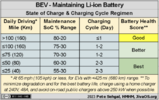I have read that you can add 200 miles in about 15 minutes at a SC, assuming that you are at or below 20% SOC.
I'm not sure where you read this.
If you are adding 200 miles of real range, you are probably charging to 90%. Charging from 20% to 90% in 15 minutes is not achievable.
I'm not sure where you read this either, because it is flat out wrong.I have also read that it can take an additional 30 to 45 minutes to go from 80% to 90%, or up to an additional 90 minutes to reach 100% SOC from 80%. If your battery is pre-conditioned, how long does it take for you to charge from 80% to 90% at a SC?
Last week I arrived at Buc-ees near Daytona Beach with 31%. I charged up to 90% in 31 minutes (while purchasing and devouring a tasty sliced brisket sandwich).



